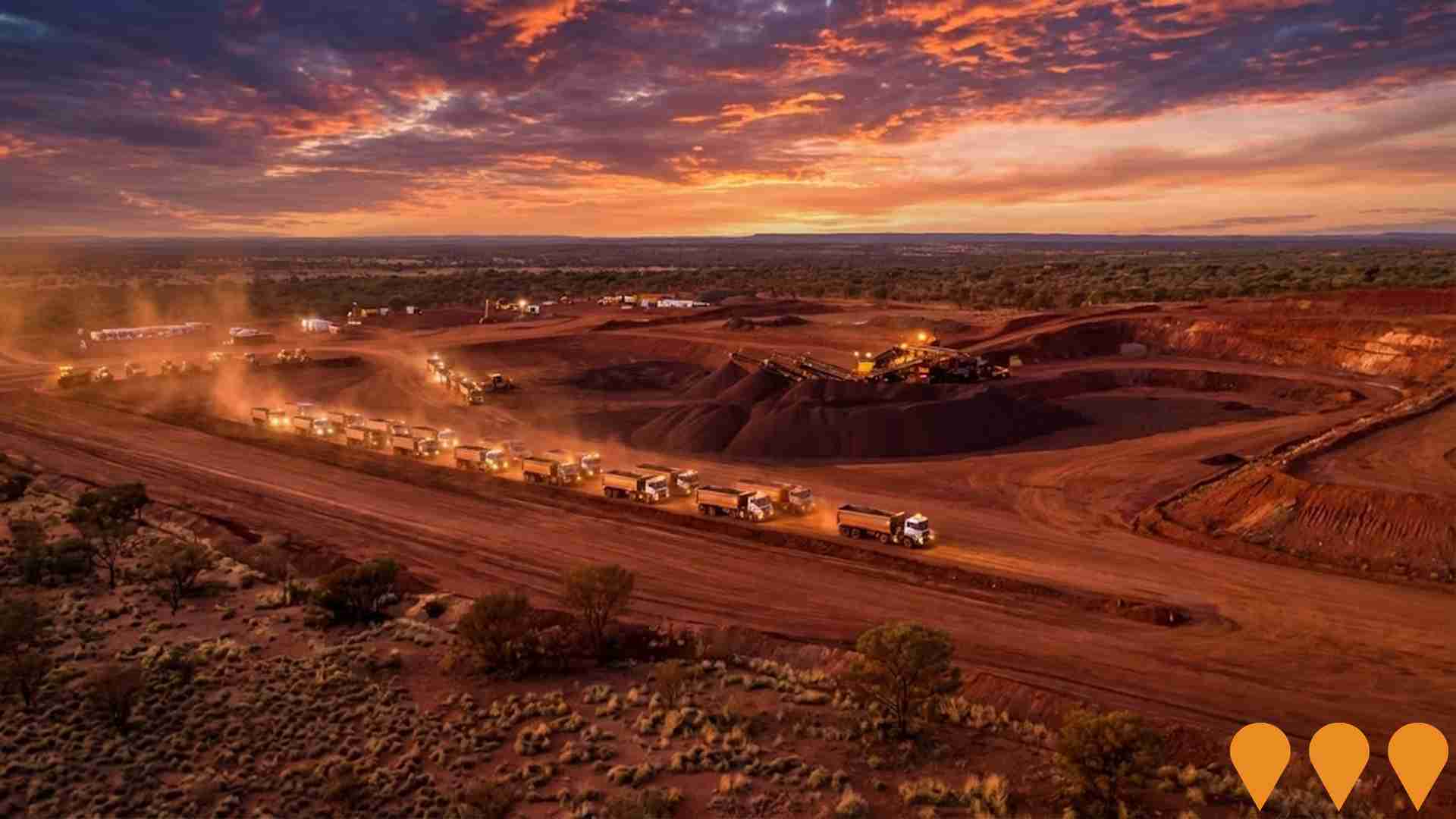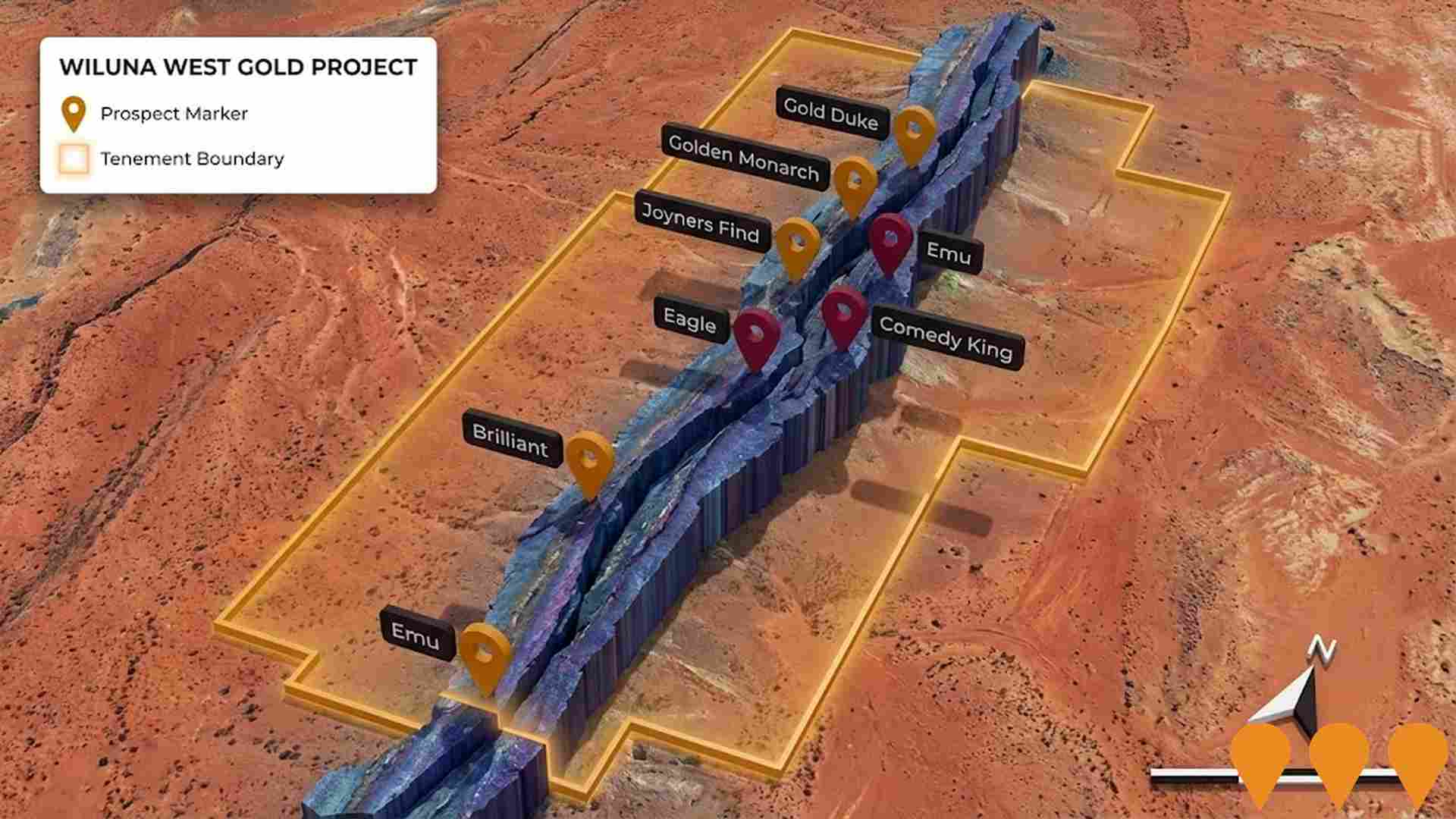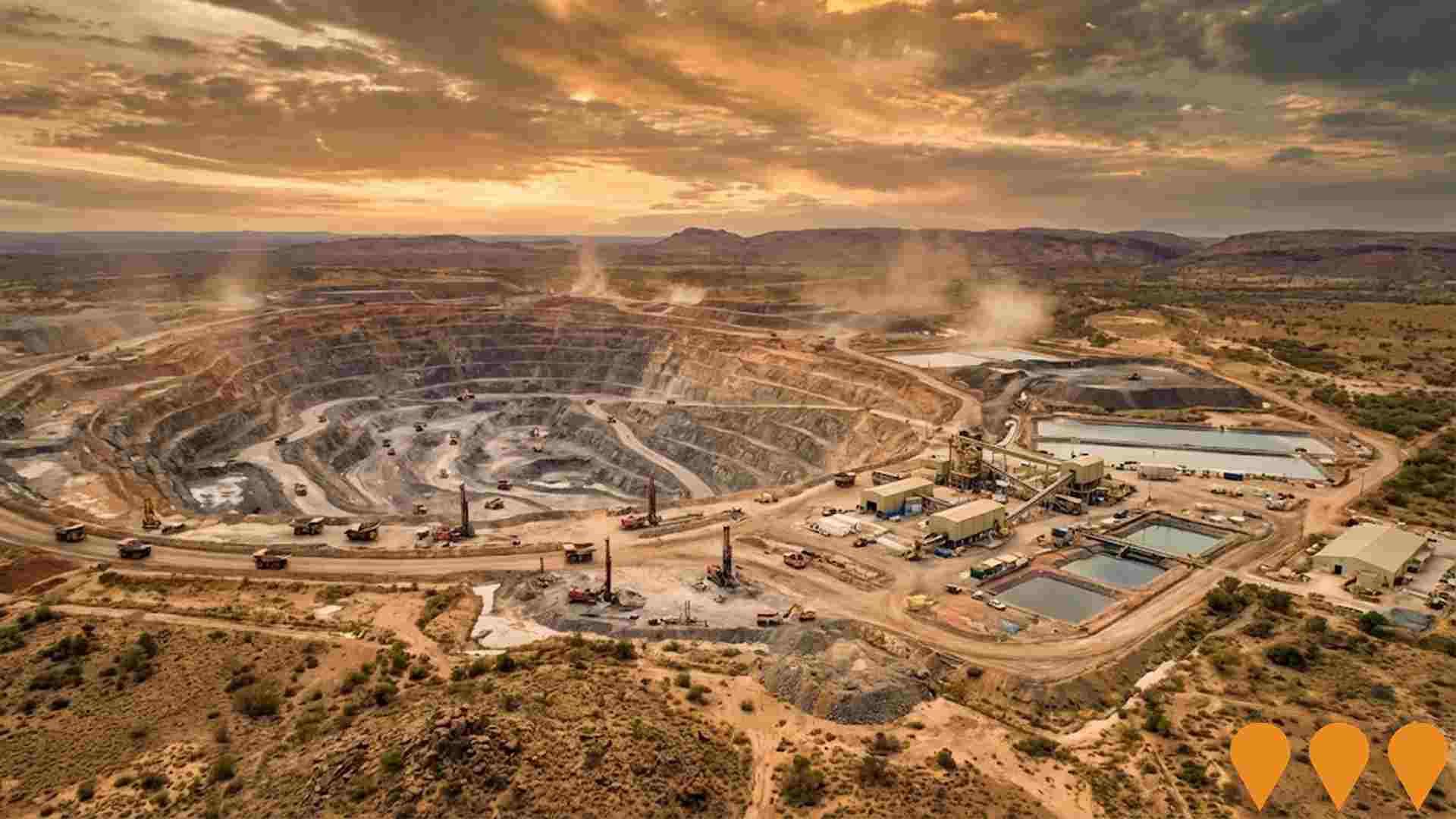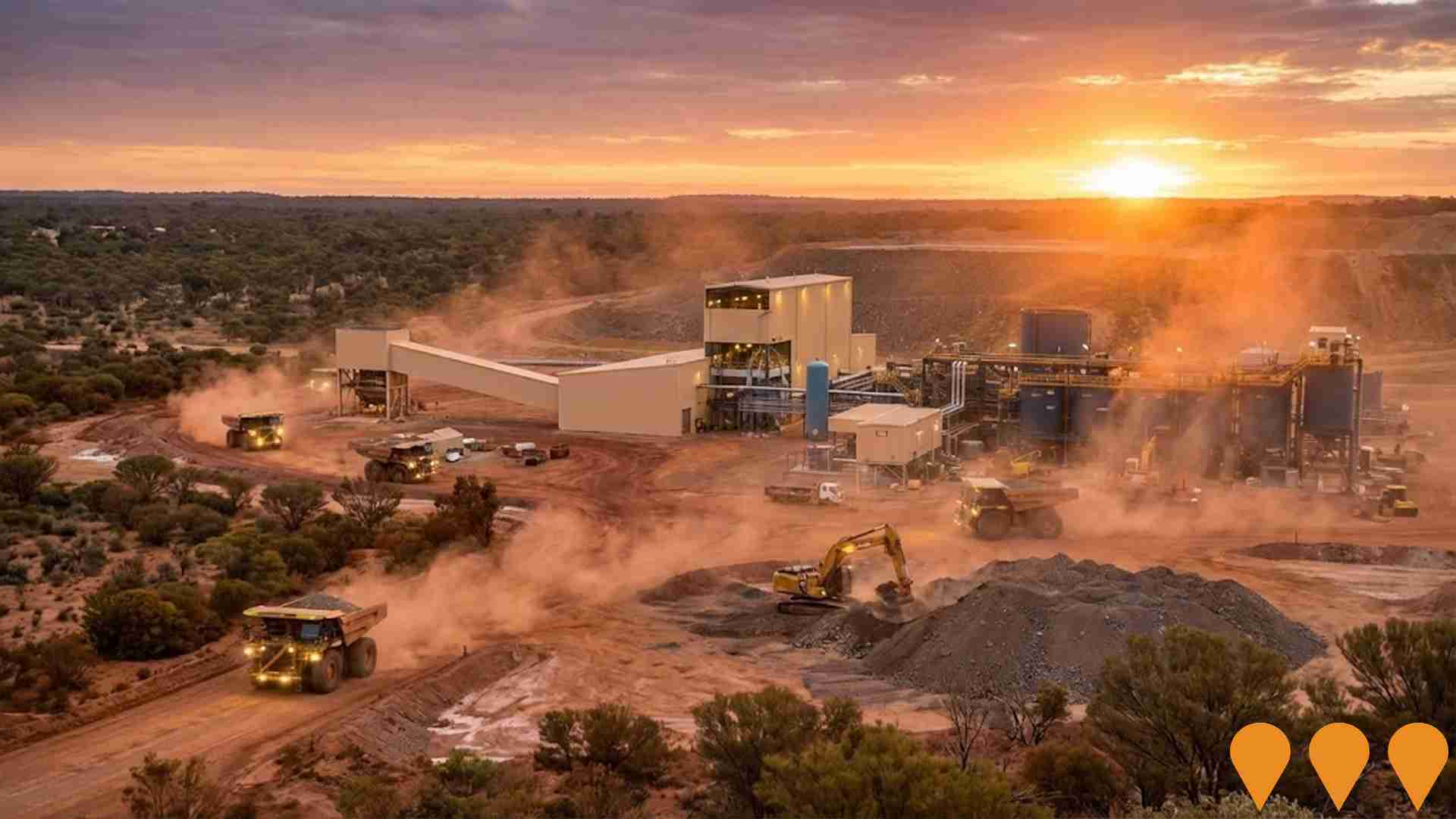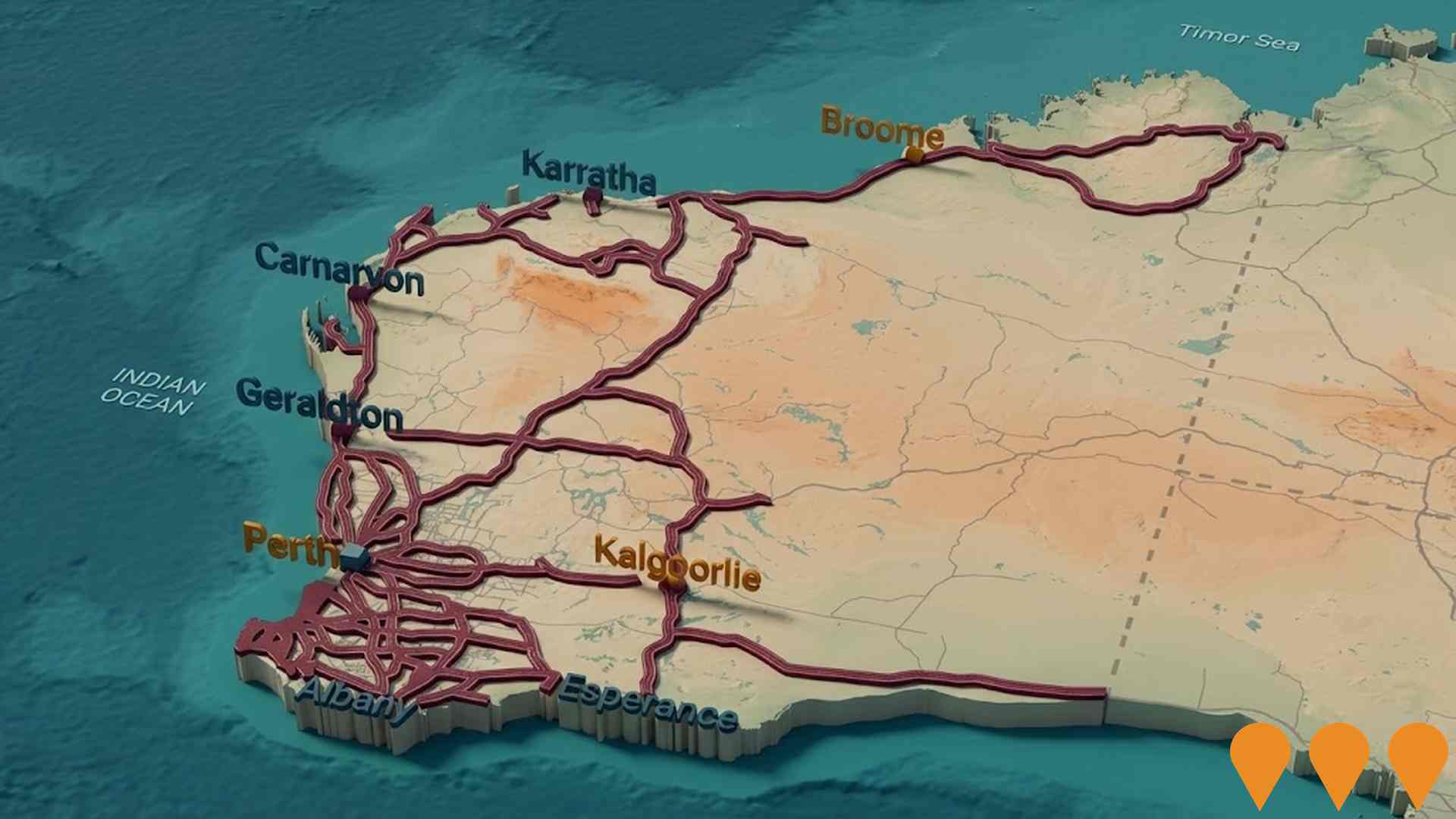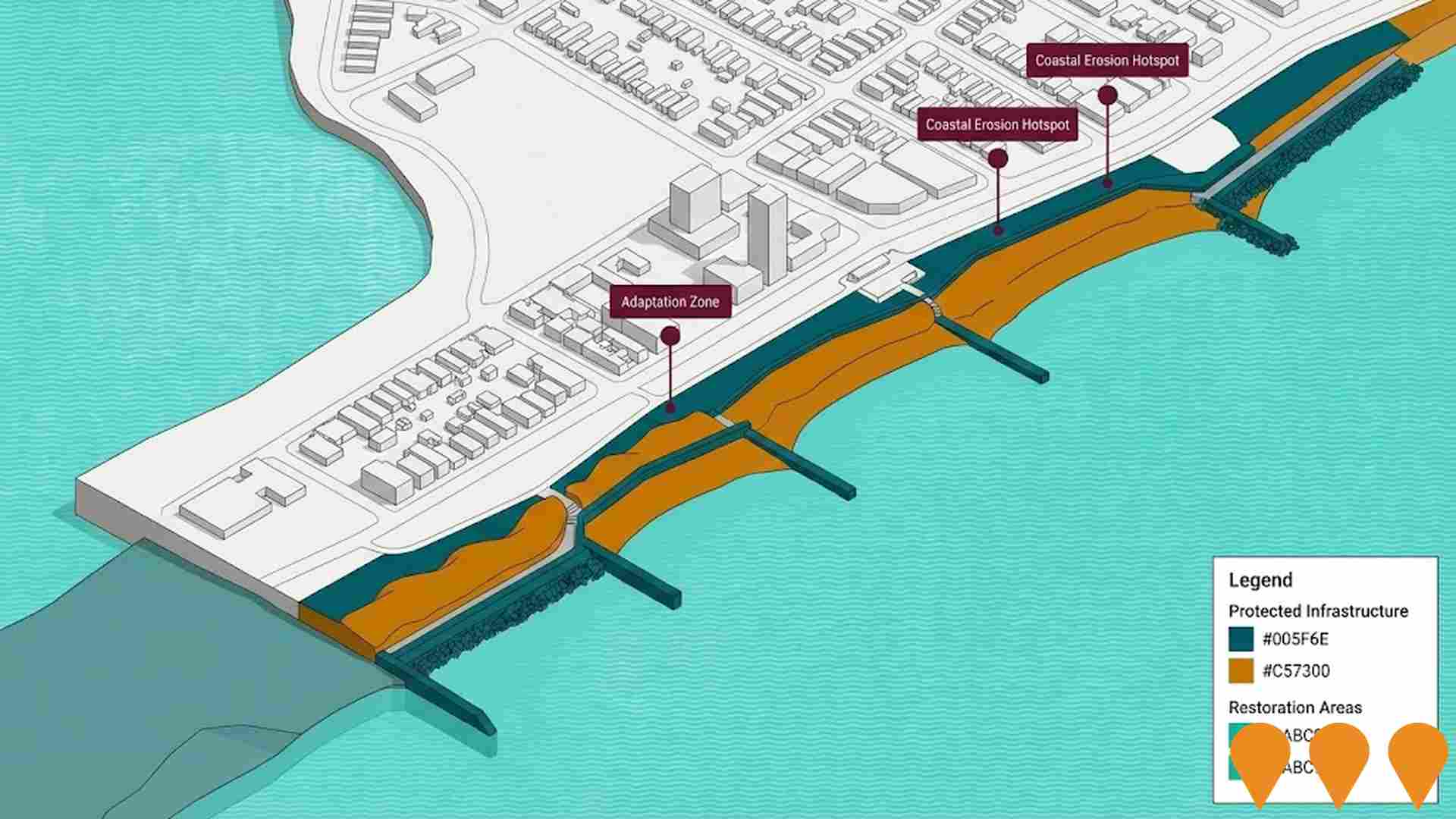Chart Color Schemes
est. as @ -- *
ABS ERP | -- people | --
2021 Census | -- people
Sales Activity
Curious about local property values? Filter the chart to assess the volume and appreciation (including resales) trends and regional comparisons, or scroll to the map below view this information at an individual property level.
Find a Recent Sale
Sales Detail
Population
An assessment of population growth drivers in Meekatharra reveals an overall ranking slightly below national averages considering recent, and medium term trends
Meekatharra's population is approximately 3,347 as of August 2025. This figure represents an increase of 194 people since the 2021 Census, which recorded a population of 3,153. The growth is inferred from ABS estimates and additional validated addresses between June 2024 and the Census date. This results in a population density of 0.00 persons per square kilometer. Meekatharra's population growth rate of 6.2% since the census is close to the SA3 area's growth rate of 7.4%. Overseas migration contributed approximately 71.4% of recent population gains.
AreaSearch uses ABS/Geoscience Australia projections for each SA2 area, released in 2024 with a base year of 2022. For areas not covered by this data and post-2032 growth estimates, AreaSearch utilises ABS Greater Capital Region projections from 2023 based on 2022 data. Future population dynamics project an above-median growth for non-metropolitan areas. Meekatharra is expected to increase by 616 persons to 2041, with a total increase of 18.4% over the 17-year period.
Frequently Asked Questions - Population
Development
Residential development activity is lower than average in Meekatharra according to AreaSearch's national comparison of local real estate markets
Meekatharra has approved approximately 5 residential properties annually. Between FY-21 and FY-25, 27 homes were approved, with none yet in FY-26. On average, 6.8 new residents arrived per year for each dwelling constructed during this period.
This demand significantly exceeds supply, which typically increases prices and competition among buyers. New dwellings are developed at an average cost of $468,000. In FY-26, $25.2 million in commercial approvals have been registered, indicating moderate commercial development. Compared to the Rest of WA, Meekatharra has 61.0% lower building activity per person. This scarcity of new homes strengthens demand and prices for existing properties.
The area's population density is estimated at 1884 people per dwelling approval, reflecting its quiet, low-activity development environment. By 2041, Meekatharra is projected to add 616 residents. At current development rates, housing supply may struggle to match population growth, potentially increasing buyer competition and supporting price increases. Recent construction comprises 75.0% standalone homes and 25.0% medium and high-density housing, maintaining the area's traditional low density character focused on family homes appealing to those seeking space.
Frequently Asked Questions - Development
Infrastructure
Meekatharra has limited levels of nearby infrastructure activity, ranking in the 1stth percentile nationally
Changes to local infrastructure significantly influence an area's performance. AreaSearch has identified 40 projects likely impacting the region. Notable initiatives include the Goldfields Highway Upgrade from Wiluna to Meekatharra, the Yeelirrie Uranium Project, the Wiluna West Iron Ore Project, and the Wiluna West Gold Project. The following list details those most relevant:.
Professional plan users can use the search below to filter and access additional projects.
INFRASTRUCTURE SEARCH
 Denotes AI-based impression for illustrative purposes only, not to be taken as definitive under any circumstances. Please follow links and conduct other investigations from the project's source for actual imagery. Developers and project owners wishing us to use original imagery please Contact Us and we will do so.
Denotes AI-based impression for illustrative purposes only, not to be taken as definitive under any circumstances. Please follow links and conduct other investigations from the project's source for actual imagery. Developers and project owners wishing us to use original imagery please Contact Us and we will do so.
Frequently Asked Questions - Infrastructure
Western Ridge Iron Ore Project
BHP's Western Ridge Iron Ore Project is a greenfield mining development adjacent to the existing Mt Whaleback operations in the Pilbara region. It forms part of the WA Iron Ore growth program to sustain production capacity at approximately 330 Mtpa. The project includes two new iron ore deposits (Western Ridge North and Western Ridge South), associated crushing and screening infrastructure, overland conveyors and supporting non-process infrastructure.
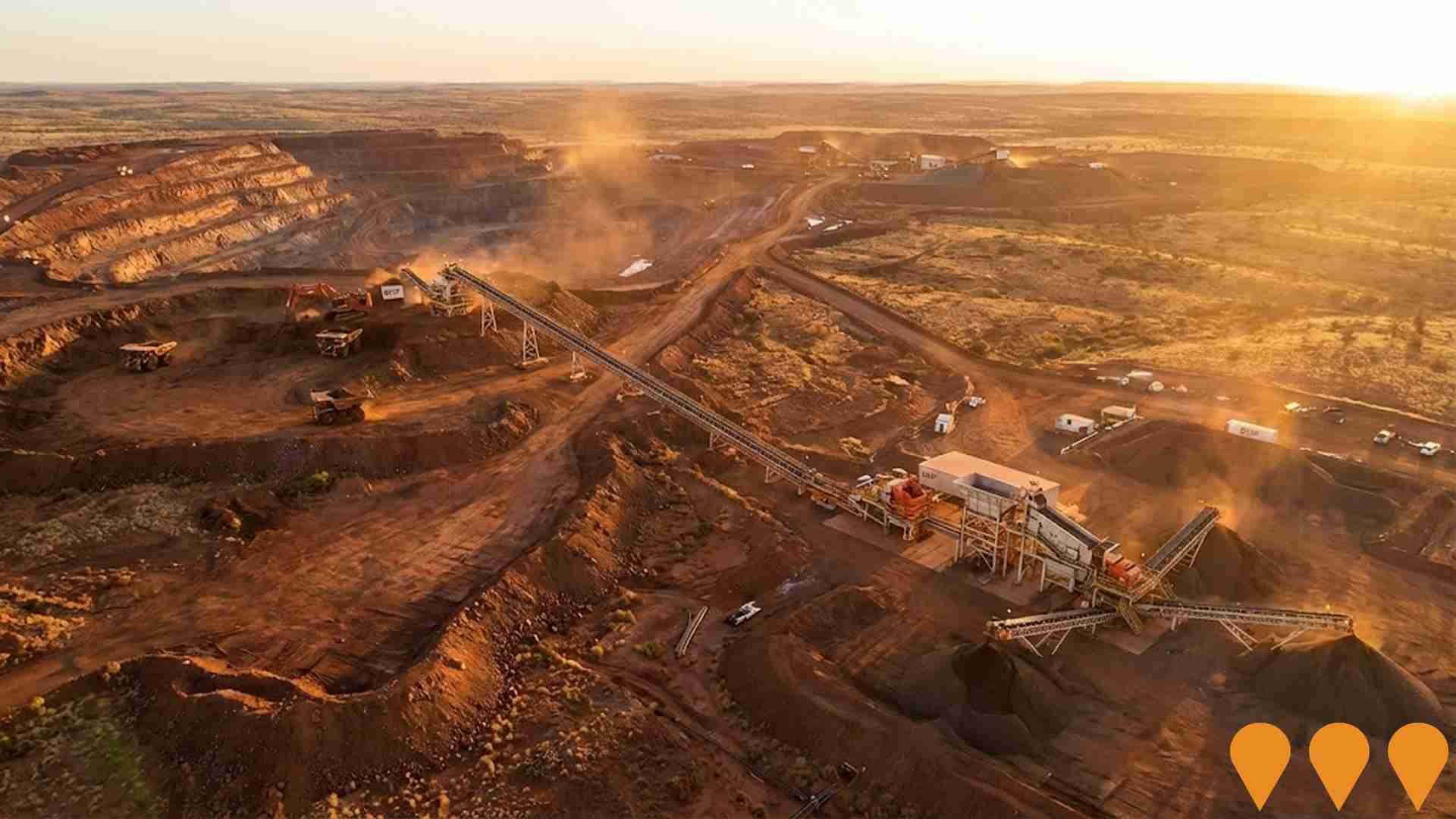
Lockyer Conventional Gas Project
Development of a central gas processing facility (CPF) by Mineral Resources with a nominal production capacity of 250 terajoules per day, associated pipelines, and up to six natural gas production wellheads. The project aims to supply the WA domestic gas market and potentially LNG export. Located in Petroleum Exploration Permits EP 368 and 426 in the onshore Perth Basin, the facility will collect natural gas from conventional wells and transport via gas gathering lines to a central processing facility. Processed gas will then be transported via an export pipeline to the Dampier to Bunbury Natural Gas Pipeline. The proposal is currently under assessment by the EPA and involves clearing up to 6.2 hectares of native vegetation within a 304.5 ha Development Envelope.
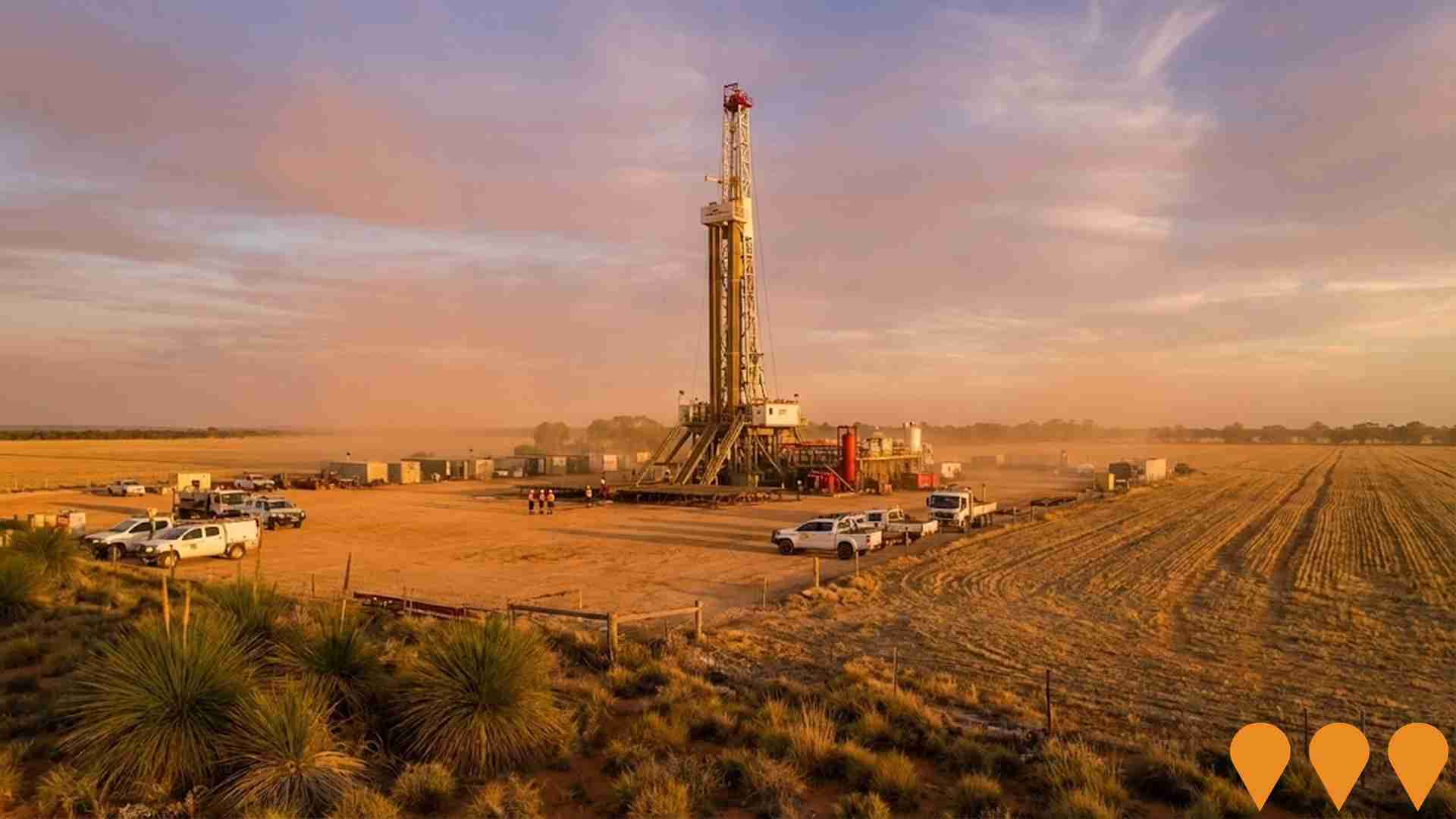
WA Regional Digital Connectivity Program (WARDCP)
Statewide co-investment program delivering new and upgraded mobile, fixed wireless and broadband infrastructure to improve reliability, coverage and performance for regional and remote Western Australia. Current workstreams include the Regional Telecommunications Project, State Agriculture Telecommunications Infrastructure Fund, and the WA Regional Digital Connectivity Program (WARDCP).

Newman Horizons Residential Estate
A residential estate offering quality and diversity of land choice, encouraging excellence in building design and delivering energy and water efficient housing suited to Newman's demanding climate. Features high-quality landscaping, footpath networks, and climate-smart housing principles.

Newman Airport Terminal Expansion
Expansion of Newman Airport terminal facilities to accommodate increased passenger traffic and improved services for the mining industry and tourism.

Newman Waste Management Facility
New waste management and recycling facility to serve Newman and surrounding communities with modern waste processing and environmental protection measures.
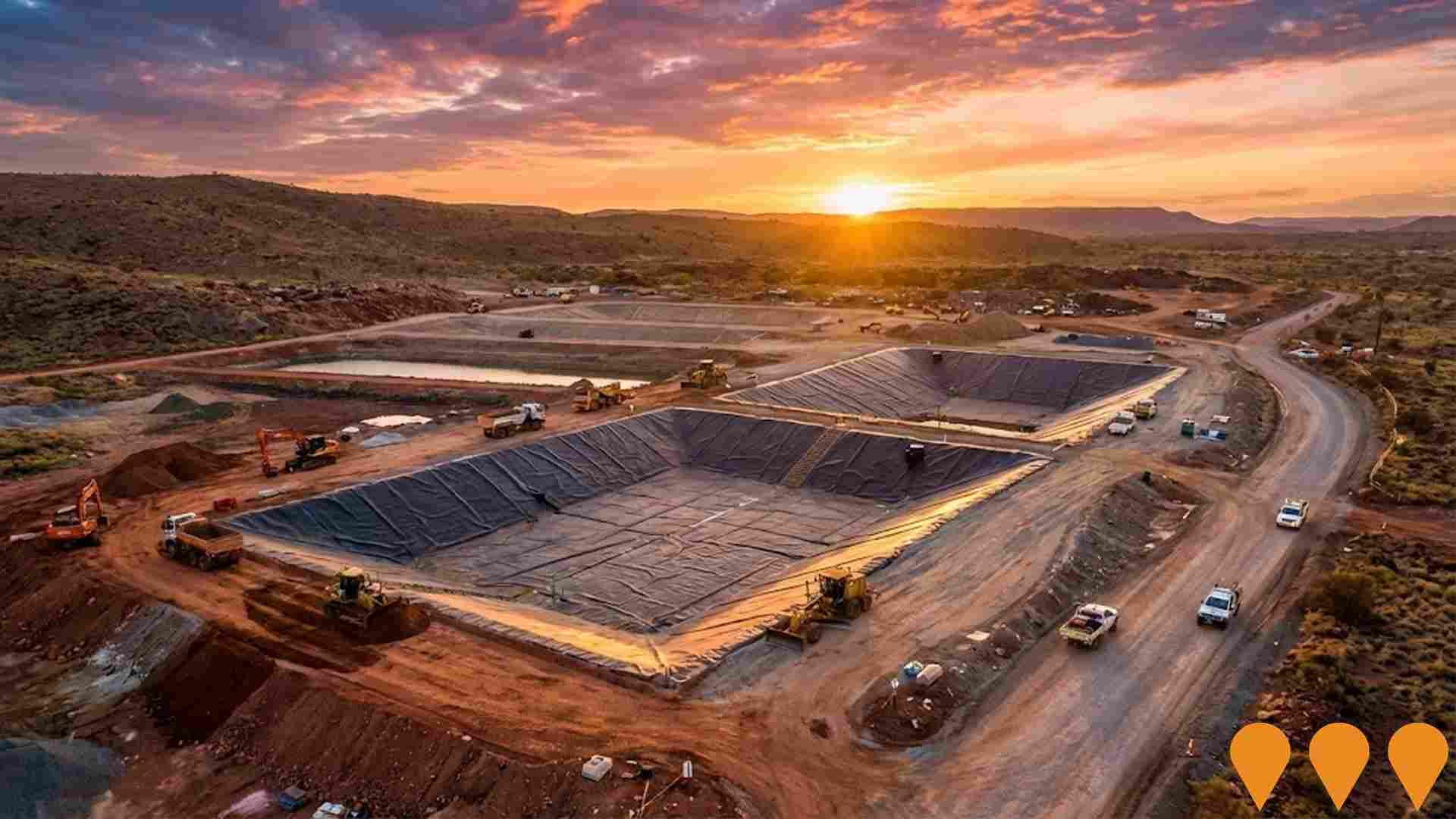
Goldfields Highway Upgrade (Wiluna to Meekatharra)
Progressive upgrade and sealing of the Goldfields Highway between Wiluna and Meekatharra to improve transport efficiency, safety, and connectivity for the mining and pastoral industries. The project is being delivered in packages, with several sections already completed and others in development.
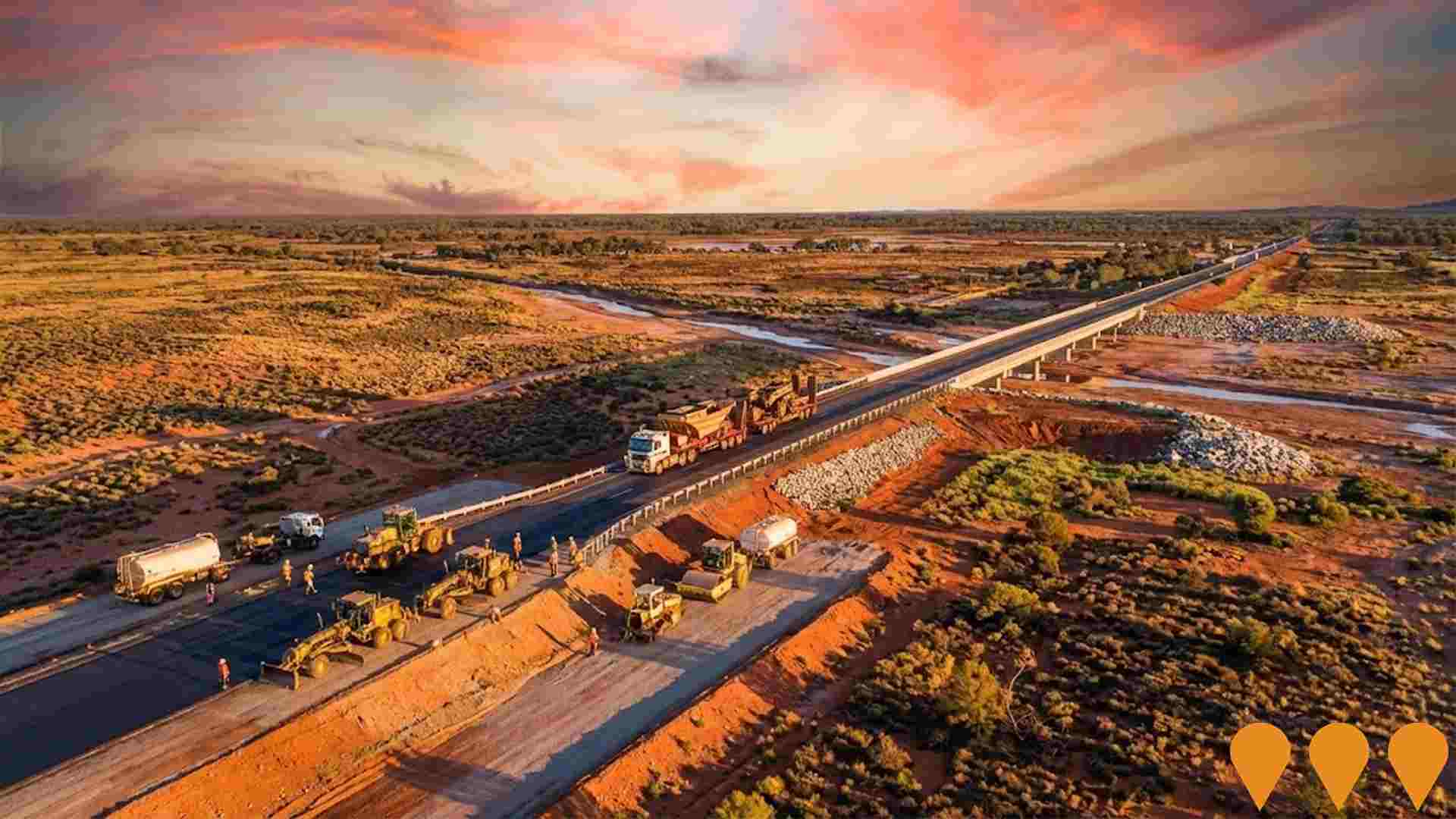
Yeelirrie Uranium Project
The Yeelirrie project is one of Australia's largest undeveloped uranium deposits. It has received state and federal environmental approvals. However, the project's progression is contingent on improved uranium market conditions. Cameco has requested an extension to the state-level environmental approvals.
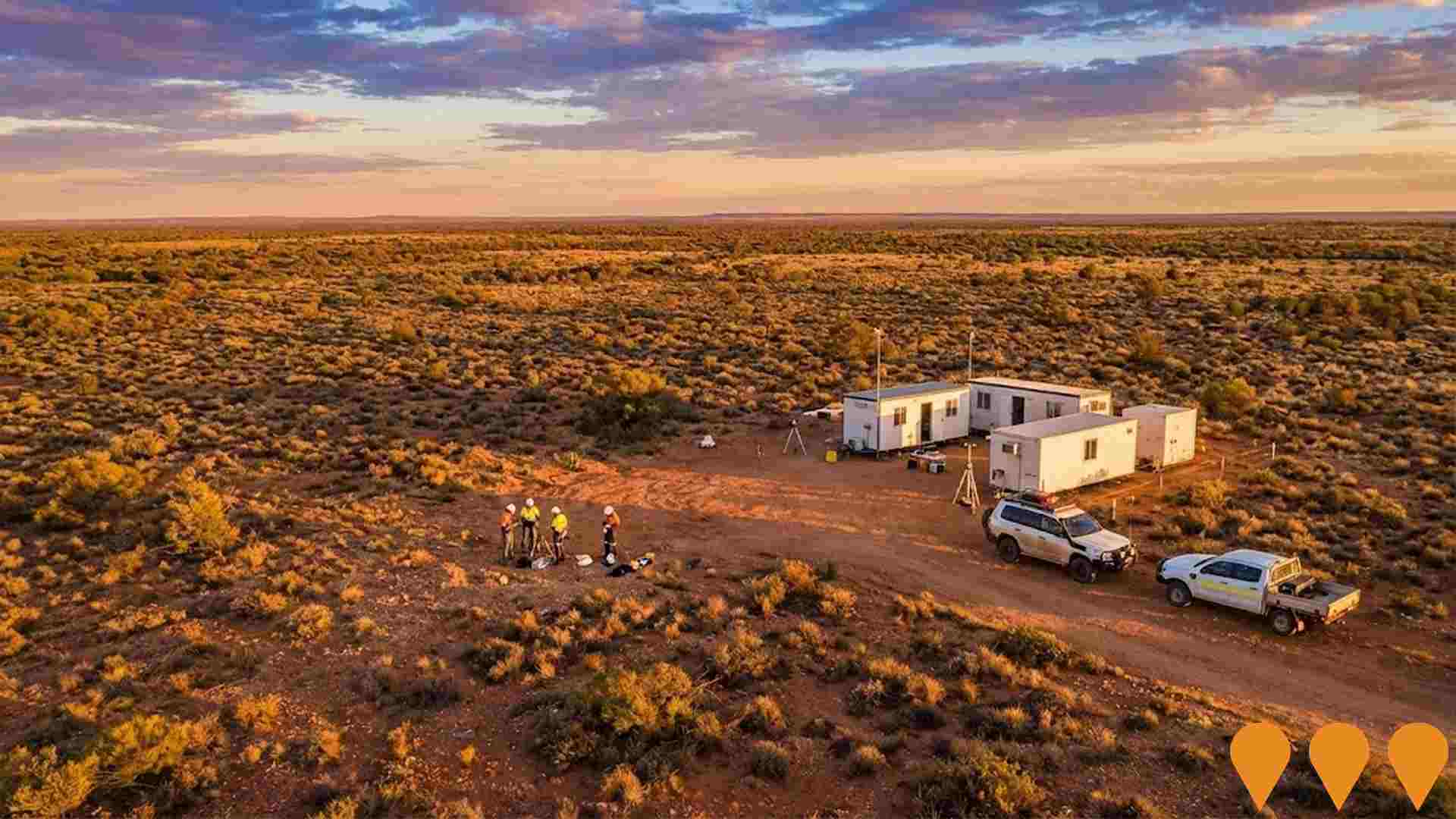
Employment
Employment conditions in Meekatharra face significant challenges, ranking among the bottom 10% of areas assessed nationally
Meekatharra has a skilled workforce with strong manufacturing and industrial sectors. The unemployment rate is 7.4%.
As of June 2025, there are 1,732 residents employed, which is 4.3% higher than the Rest of WA's rate of 3.2%. Workforce participation in Meekatharra lags at 45.5%, compared to the Rest of WA's 59.4%. Key industries for employment are mining, public administration & safety, and education & training. Mining is particularly strong with an employment share of 2.9 times the regional level.
Health care & social assistance has a limited presence with 5.5% employment compared to the regional average of 11.9%. There are 1.5 workers for every resident in Meekatharra, indicating it functions as an employment hub attracting workers from surrounding areas. Between June 2024 and June 2025, the labour force decreased by 3.0% while employment decreased by 3.3%, leading to a rise in unemployment rate of 0.3 percentage points. In contrast, the Rest of WA saw employment grow by 1.1% and the unemployment rate fall by 0.6 percentage points during the same period. Jobs and Skills Australia's national employment forecasts from May 2025 project overall growth of 6.6% over five years and 13.7% over ten years. Applying these projections to Meekatharra's employment mix suggests local growth of approximately 4.3% over five years and 10.5% over ten years, although this is a simple extrapolation for illustrative purposes and does not account for localised population projections.
Frequently Asked Questions - Employment
Income
Income figures position the area below 75% of locations analysed nationally by AreaSearch
AreaSearch's data for financial year 2022 shows Meekatharra's median income is $50,577 and average income is $63,545. This is below the national average. In Rest of WA, median income is $57,323 and average income is $71,163. By September 2025, estimated incomes are approximately $57,759 (median) and $72,568 (average), accounting for a 14.2% Wage Price Index growth since financial year 2022. Meekatharra's individual earnings rank at the 81st percentile nationally ($1,024 weekly). However, household income ranks lower at the 13th percentile. Income brackets show that 28.7% of Meekatharra's population falls within the $1,500 - 2,999 range, similar to metropolitan regions (31.1%). Housing costs are modest, with 93.7% of income retained, but total disposable income ranks at just the 24th percentile nationally.
Frequently Asked Questions - Income
Housing
Meekatharra is characterized by a predominantly suburban housing profile, with above-average rates of outright home ownership
The dwelling structure in Meekatharra, as per the latest Census, consisted of 86.8% houses and 13.2% other dwellings (semi-detached, apartments, 'other' dwellings). This is similar to Non-Metro WA's structure of 87.5% houses and 12.5% other dwellings. Home ownership in Meekatharra stood at 38.4%, with mortgaged dwellings at 7.8% and rented ones at 53.9%. The median monthly mortgage repayment was $650, below Non-Metro WA's average of $1,517. The median weekly rent in Meekatharra was $120, compared to Non-Metro WA's $250. Nationally, Meekatharra's mortgage repayments were significantly lower than the Australian average of $1,863, and rents were substantially below the national figure of $375.
Frequently Asked Questions - Housing
Household Composition
Meekatharra features high concentrations of lone person households and group households, with a lower-than-average median household size
Family households account for 56.6% of all households, including 13.5% couples with children, 27.2% couples without children, and 13.2% single parent families. Non-family households constitute the remaining 43.4%, with lone person households at 39.6% and group households comprising 4.4%. The median household size is 2.2 people, which is smaller than the Rest of WA average of 2.4.
Frequently Asked Questions - Households
Local Schools & Education
Meekatharra faces educational challenges, with performance metrics placing it in the bottom quartile of areas assessed nationally
The area's university qualification rate is 17.7%, significantly lower than the Australian average of 30.4%. Bachelor degrees are most common at 13.0%, followed by postgraduate qualifications (3.4%) and graduate diplomas (1.3%). Vocational credentials are prevalent, with 48.2% of residents aged 15+ holding them - advanced diplomas at 9.3% and certificates at 38.9%. Educational participation is high, with 41.5% of residents currently enrolled in formal education: 18.1% in primary, 10.6% in secondary, and 4.1% in tertiary education.
Meekatharra has a network of 8 schools educating approximately 400 students, comprising 1 primary, 1 secondary, and 6 K-12 schools. School places per 100 residents (11.9) are below the regional average (16.8), with some students possibly attending schools in nearby areas.
Frequently Asked Questions - Education
Schools Detail
Nearby Services & Amenities
Transport
Transport servicing is very low compared to other areas nationally based on assessment of service frequency, route connectivity and accessibility
Meekatharra has ten active public transport stops, all of which are bus stops. These stops are served by one route that offers four weekly passenger trips in total. The accessibility of these services is limited, with residents typically living 58621 meters away from the nearest stop.
On average, there are no daily trips across all routes, resulting in approximately zero weekly trips per individual stop.
Frequently Asked Questions - Transport
Transport Stops Detail
Health
Health outcomes in Meekatharra are marginally below the national average with common health conditions slightly more prevalent than average across both younger and older age cohorts
Meekatharra shows below-average health indicators with common conditions slightly more prevalent than average across both younger and older age groups. Private health cover rate is approximately 51%, compared to 53.7% across Rest of WA.
Diabetes and mental health issues are most common, affecting 7.9 and 6.3% respectively. 71.9% declare no medical ailments, compared to 66.8% in Rest of WA. The area has 12.6% residents aged 65 and over (421 people), lower than the 18.3% in Rest of WA. Health outcomes among seniors are above average, better than the general population in health metrics.
Frequently Asked Questions - Health
Cultural Diversity
The level of cultural diversity witnessed in Meekatharra was found to be above average when compared nationally for a number of language and cultural background related metrics
Meekatharra, as per the census conducted on 9 August 2016, exhibited above-average cultural diversity with 21.1% of its population born overseas and 17.5% speaking a language other than English at home. Christianity was the predominant religion in Meekatharra, comprising 44.9% of the population. Notably, the 'Other' religious category made up 1.1% of Meekatharra's population, higher than the Rest of WA average of 0.5%.
In terms of ancestry, English heritage comprised 24.2%, lower than the regional average of 30.7%. Australian Aboriginal heritage was significantly higher at 24.0%, compared to the regional average of 6.9%. Australian heritage made up 21.0%, notably lower than the regional average of 30.2%. Certain ethnic groups showed notable differences: Maori heritage was overrepresented at 1.1% in Meekatharra, compared to 0.7% regionally; Welsh heritage was also higher at 0.7%, versus 0.5%; and French heritage stood at 0.6%, against a regional average of 0.3%.
Frequently Asked Questions - Diversity
Age
Meekatharra's population is slightly younger than the national pattern
Meekatharra's median age is 37, slightly lower than the Rest of WA figure of 40 and close to Australia's 38 years. Compared to the Rest of WA average, the 25-34 cohort is notably over-represented in Meekatharra at 21.4%, while the 5-14 age group is under-represented at 8.2%. This concentration of the 25-34 age group is well above the national average of 14.5%. From 2021 to present, the 35-44 age group has grown from 14.3% to 16.3%, and the 25-34 cohort increased from 19.7% to 21.4%. Conversely, the 65-74 age group has declined from 9.4% to 8.1%, and the 45-54 age group dropped from 14.6% to 13.4%. Demographic modeling suggests Meekatharra's age profile will evolve significantly by 2041, with the 35-44 age cohort projected to expand by 235 people (43%), from 546 to 782. Conversely, both the 75-84 and 55-64 age groups are projected to see reduced numbers.
